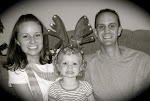The past few weeks John has had the opportunity to visit the various work zones where FH Sucre is currently working. These zones are sprinkled across the countryside and typically 2, 3 or 4 hours away. Initially John will be working out of the central office in Sucre and in the neighboring suburb called Horna C’Kasa. However, starting in July, John will begin visiting several of these locations on a monthly basis to strengthen relations with pastors and begin implementing training on Biblical principles and wholistic ministry concepts. Many of these villages are tucked in the mountains of Bolivia and a rugged 3 hour ride across, alpaca pastures, rocky cliffs, and flowing rivers away. You definitely can’t consider half of the paths anything close to a road! The villages however, are filled with a unique countryside charm and the people (though Quecha speakers) are often very gracious and welcoming. Below are a few pictures and a brief description of the villages.

The flowers of Tomoyo. Tomoyo is a village located in a fertile plain between the mountains. Currently FH is working with 2 churches in Tomoyo and is training farmers with a large agriculture and live stock project.
Village stream outside of the FH Tomoyo office
FH Tomoyo office. The best mode of transportation through the mountains is via dirt bike.
This is a view out my window as we travel up the mountain from Tomoyo to Ravelo. Yes this is the road and the bridge all in one.
Our FH vehicle. The SUV's never come back the same color they left.
View from the road to Ravelo.
Village street in Ravelo. In a few short months this will be the home for the Hope Church team!! Yeah we can't wait!
FH office in Ravelo.
Up the mountain even further to Ckda Ckda and Ocuri.
View of the mountains from Ocuri. Ocuri is at an elevation of 13,500ft. One of the highest villages in the world.
The FH office in Ckda Ckda and Ocuri. Better bring a parka if you plan to sleep in Ckda Ckda. The weather at 13,000ft is quite cold and unpredictable. Projects in this region include, church strengthening, health and nutrition, and agriculture. At this elevation you really can't grow anything but potatoes so the families struggle greatly with health and nutritional problems.
The following pictures were taken on another journey to Chiuqisaca Central. Chiuqisaca Central is at a significantly lower elevation than Sucre, thus the landscape is lush and the climate warm.
Street view from the village of Padilla. FH assists in a variety of irrigation and agriculture projects in this region.
The village of Sopacuay. FH just began a partnership with a church in Sopacuay. John will be making occasional trips here to meet with the church pastor and leaders to facilitate training's on Biblical principles.
City square in Sopacuay. It's a beautiful little town.
"Christ Is My Lord Church" in Sopacuay. Here is will John will be spending a little time over the next few years.





















 Once the barge was full, 3-4 men with big sticks would push the barge from the dock, out onto the lake. (This was not an easy job as you can see in the video below!)
Once the barge was full, 3-4 men with big sticks would push the barge from the dock, out onto the lake. (This was not an easy job as you can see in the video below!) 

